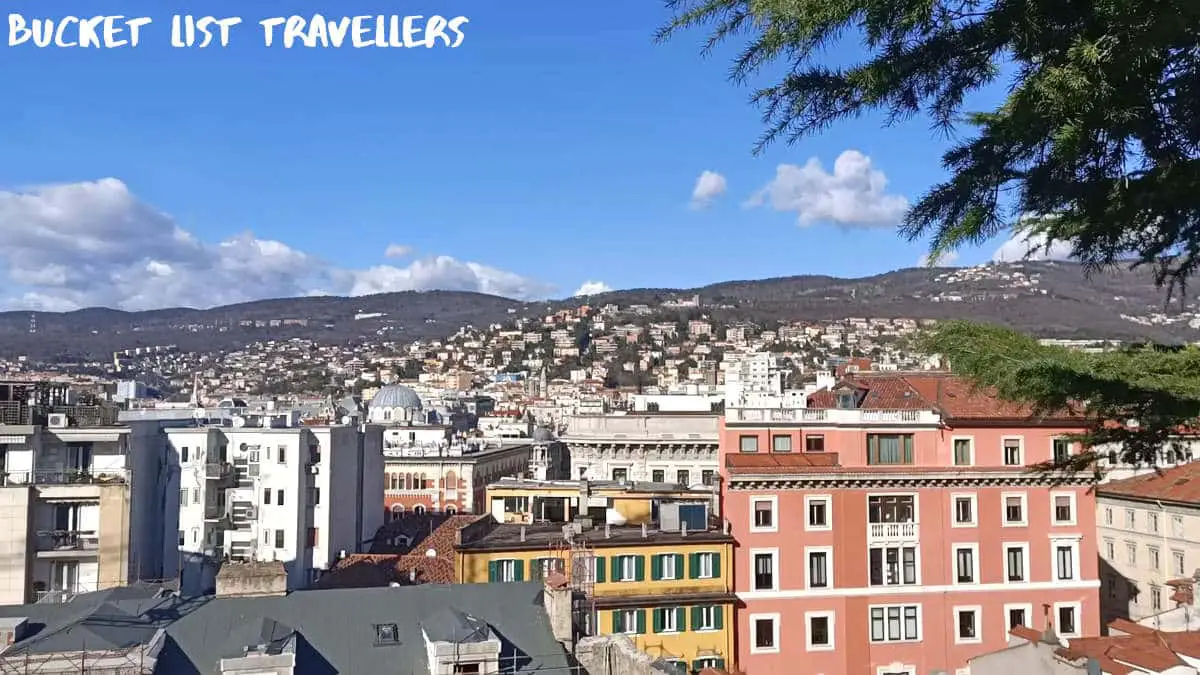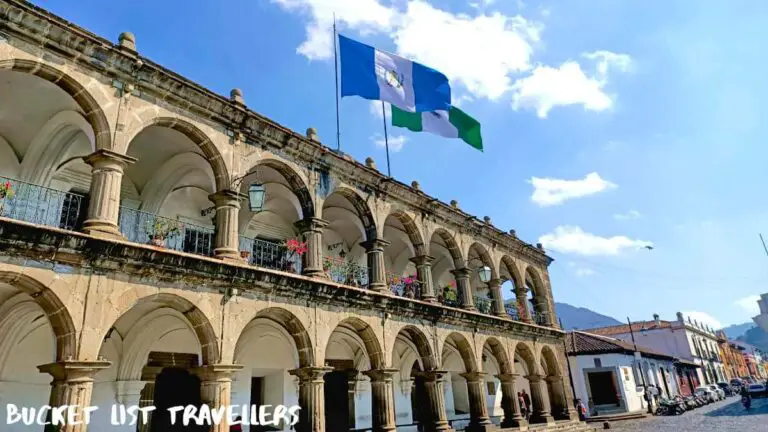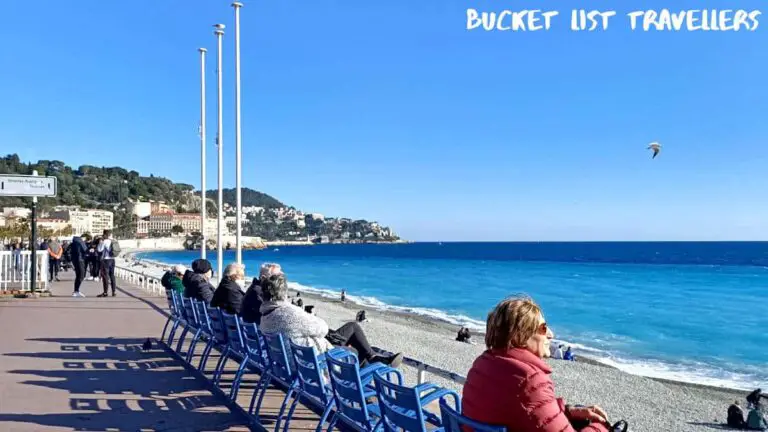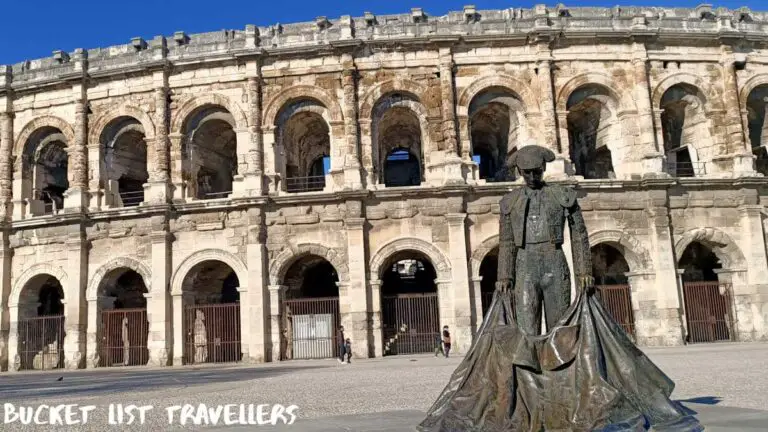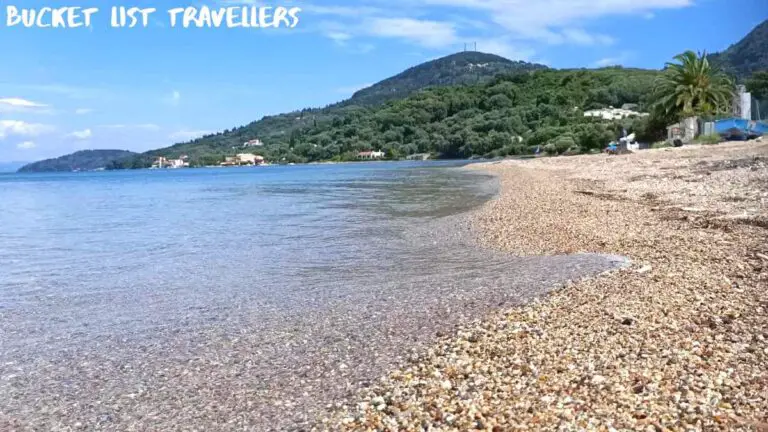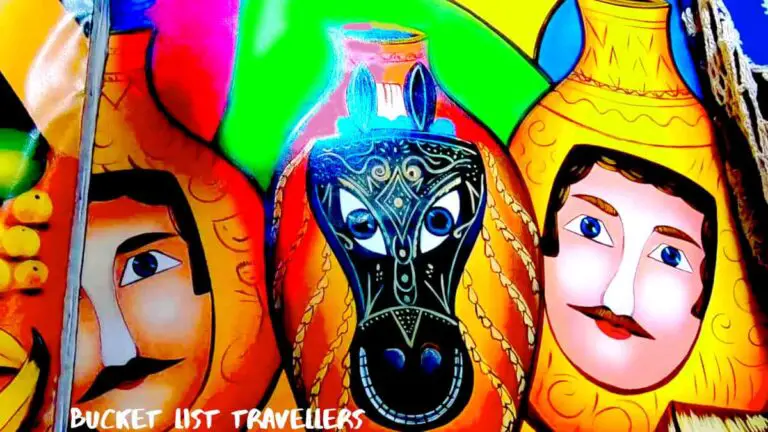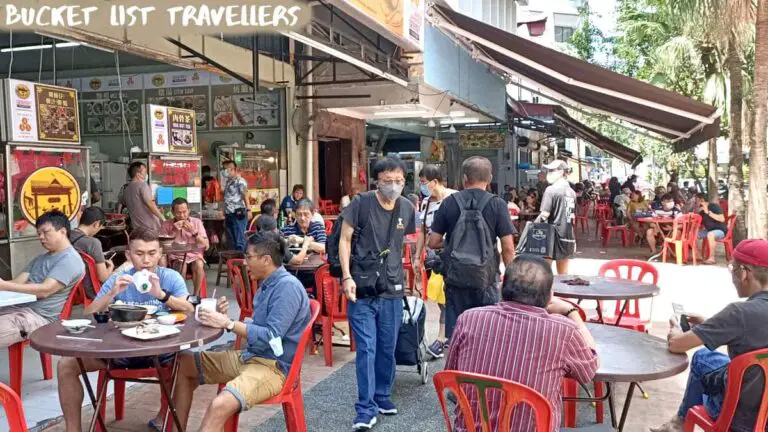The port city of Trieste is a popular stopover when travelling between Central Europe and Italy. Being part of the Austro-Hungarian Empire for many years, it has a unique character which is different from the rest of Italy. Moreover prices are relatively cheap here by Italian standards. The city has a range of attractions on offer including bustling town squares, impressive churches and scenic vantage points. Additionally, the Istrian style food of Trieste is hearty and delicious. In this Trieste destination guide, we cover everything you need to know to plan the perfect Trieste trip.
Short on time? Here are our Trieste Italy top recommendations:
Highlights: explore the city, including landmarks such as Piazza Unità d’Italia and the Canal Grande di Trieste and enjoy delicoius Istrian food.
Activities: book your Trieste Italy Tours with Get Your Guide.
Accommodation: we use Booking.com to find the best hotels.
Transport: TrainLine for trains and FlixBus for intercity buses.
Flights: find cheapest flights with cashback on WayAway.
Airport Lounge Access: start your holiday the right way with Priority Pass.
Travel Medical Insurance: SafetyWing Nomad Insurance is the ideal choice for long-term travellers and digital nomads.
What is Trieste Italy famous for?
Trieste is a major port city in Italy, located at the head of the Mediterranean Sea. It used to be the terminus of the maritime Silk Road, linking it to the Suez Canal and Turkey. Trieste has a rich history as a former city of the Austro-Hungarian empire, and as a crossroads of cultures and civilizations, such as the Romans, Habsburgs, Slavs and Venetians. This has given Trieste a unique culture and lifestyle, especially its cafe culture, which is renowned for its quality coffee.
Why you should visit Trieste Italy
Trieste is a relaxed Italian port city near the border of both Slovenia and Croatia. It is a convenient first or last stop in Italy when also travelling to the Baltic countries. Being close to Central Europe, its prices are generally cheaper than other parts of Italy, making it an affordable travel destination.
For centuries Trieste was part of Austria and subsequently the Austro-Hungarian Empire. Consequently its food and culture is heavily influenced by these Austrian and Hungarian roots. The traditional food in Trieste has more in common with Central European countries than with the rest of Italy. In particular we enjoyed sampling dishes such as gulasch alla Triestina, a Triestine version of goulash, as well as strucolo de pomi, a local variation of apple strudel.
Trieste has long been an important seaport, and it flourished as a major trading hub in the Mediterranean. Historically it was the fourth largest city in the Austro-Hungarian Empire and the major port of the Austrian Riviera. During that time it became a centre of literature and music, attracting artists and intellectuals such as James Joyce and Sigmund Freud.
Trieste Destination Guide: Know before you go
Basic info about Trieste Italy

- City name in Italian – Trieste
- Language – Italian. Triestine is the main dialect of the Venetian language spoken in Trieste. Many people in hotels, restaurants and other tourist businesses will be able to speak English, but not everyone will be able to speak English.
- Currency – euro (EUR). This has been the official currency of Italy since 2002. Currency exchanges can be found in most cities and ATMs are available widely throughout the country.
- Population – 204,000 (2017)
- Area – 84 km2 (32 sq mi)
- Province – the city of Trieste was previously the capital of the Province of Trieste. However this province was disestablished in 2017. The autonomous region that Trieste is in (Friuli-Venezia Giulia) is currently not subdivided into provinces.
- Region – Friuli-Venezia Giulia. Trieste is the capital of this region.
- Emergency number – 112 or 114 (sms or fax)
- Police number – 17
Utilities in Trieste Italy
- Electricity – Italy uses Types C, F and L power plugs. The country operates on a 230v supply voltage at 50Hz. Power outages are not common in Italy. However in some places you need to be careful not to use too many appliances at once or you’ll overload the system.
- Water – the tap water in Italy is safe to drink almost everywhere in the country. However there are a some very rural areas may not have water that’s safe to drink. In particular, if you see a sign that says “acqua non potabile”, that means the water is not safe to drink.
- Toilets – sit-down flushing toilets are the most common type of toilet in Italy. You can flush your toilet paper directly into the bin. Additionally, bidets are a common feature of many bathrooms. Public toilets are common in Italy. However many public toilets charge a fee anywhere from 50 cents to 1 euro to use.
- Telephone country code: +39
Where is Trieste Italy?
Trieste is in the Friuli-Venezia Giulia region of northern Italy. It is a port city on the Adriatic Sea in the Gulf of Trieste. Trieste is close to the border of both Slovenia and Croatia. From Trieste, it is a 15 minute drive to Slovenia and only a further 15 minute drive to Croatia.
The closest major Italian cities to Trieste are Udine as well as Venice. Trieste is 1 hour by train from Udine and 2 hours by train from Venice.
How to get to Trieste Italy
Trieste destination guide: Arriving by land
Trieste Italy intercity land transport
The main transport options for travelling overland to Trieste Italy are:
- Private vehicle
- Private transport operator
- Train
- Bus
- Bike
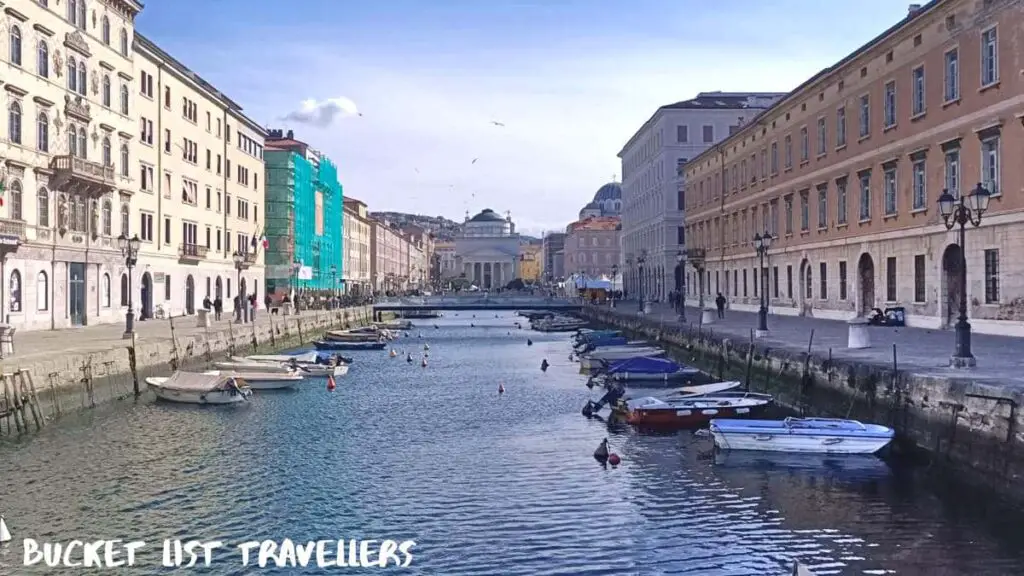
Driving to Trieste from within Italy
If you are driving to Trieste from within Italy, here are the travel times and distances:
- Udine – 1 hour 1 minute (87km, 54miles) with tolls or 1 hour 20 minutes (74km, 46miles) without tolls
- Venice – 1 hour 49 minutes (159km, 99miles) with tolls or 2 hours 46 minutes (158km, 98miles) without tolls
- Verona – 2 hours 39 minutes (276km, 171miles) with tolls or 4 hours 43 minutes (303km, 188miles) without tolls
- Bologna – 3 hours 3 minutes (310km, 193miles) with tolls or 5 hours 17 minutes (315km, 196miles) without tolls
- Milan – 4 hours 11 minutes (422km, 262miles) with tolls or 7 hours 9 minutes (458km, 285miles) without tolls
- Rome – 6 hours 30 minutes (682km, 424miles) with tolls or 8 hours 57 minutes (657km 408miles) without tolls
Intercity trains to Trieste Italy
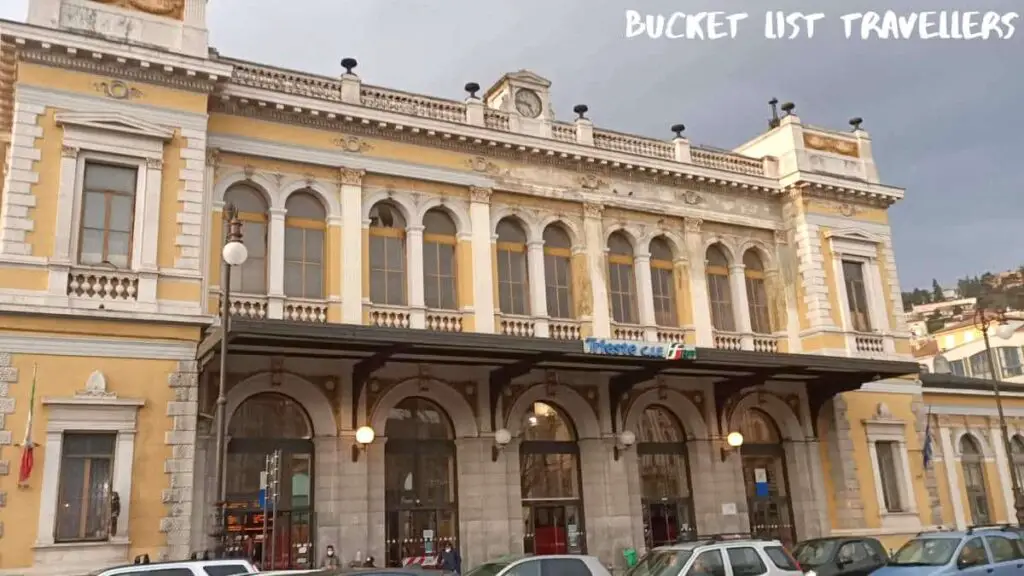
Trains are a cheap and efficient way to get to Trieste Italy. Trieste has 1 train station – Trieste Centrale railway station.
The following train brands service Trieste:
- Frecciarossa – this is one of Italy’s high speed services. It is operated by Trenitalia.
- Frecciargento – this is one of Italy’s high speed services. It is operated by Trenitalia.
- Intercity (IC) – this is a non-high speed rail service. These services travel between the major towns and cities in Italy and make more frequent stops than the high speed rail services. It is operated by Trenitalia.
- Intercity Notte – this is a non-high speed night rail service. These services travel between the major towns and cities in Italy and make more frequent stops than the high speed rail services. It is operated by Trenitalia.
- Regional Trains – these are the slowest and cheapest trains. Reservations may or may not be available and they may not have amenities like air-conditioning or first class cars. The types of Regional Trains available are InterRegionale (IR), Regionale (R), Diretto (D) and Espresso (E). Be sure to validate your ticket at a ticket stamping machine at the station before boarding your train.
The main railway company in Italy is called Trenitalia.
We recommend using the app and website TrainLine to book intercity train tickets in Italy. This is the app we used. We found it very easy to use with great functionality. Another great feature is that you can see days ahead to see what times of the day were the cheapest rates.
Intercity buses to Trieste Italy
A common way to get around Italy is by using intercity buses. These are a budget friendly alternative to trains, but are generally a slower option. Intercity bus companies in Italy include Marino Autolinee, Itabus, Autolinee Federico, Interbus as well as FlixBus. Popular bus destinations from Trieste include:
- Ljubljana Slovenia – travel time 1.5 hours. Tickets start from 9 euro one way.
- Venice Italy – travel time 2-3 hours. Tickets start from 9 euro one way.
- Pula Croatia – travel time 3.5 hours. Tickets start from 14 euro one way.
- Koper Slovenia – travel time 0.5 hours. Tickets start from 7 euro one way.
- Zagreb Croatia – travel time 4-5 hours. Tickets start from 16 euro one way.
- Rijeka Croatia – travel time 2 hours. Tickets start from 9 euro one way.
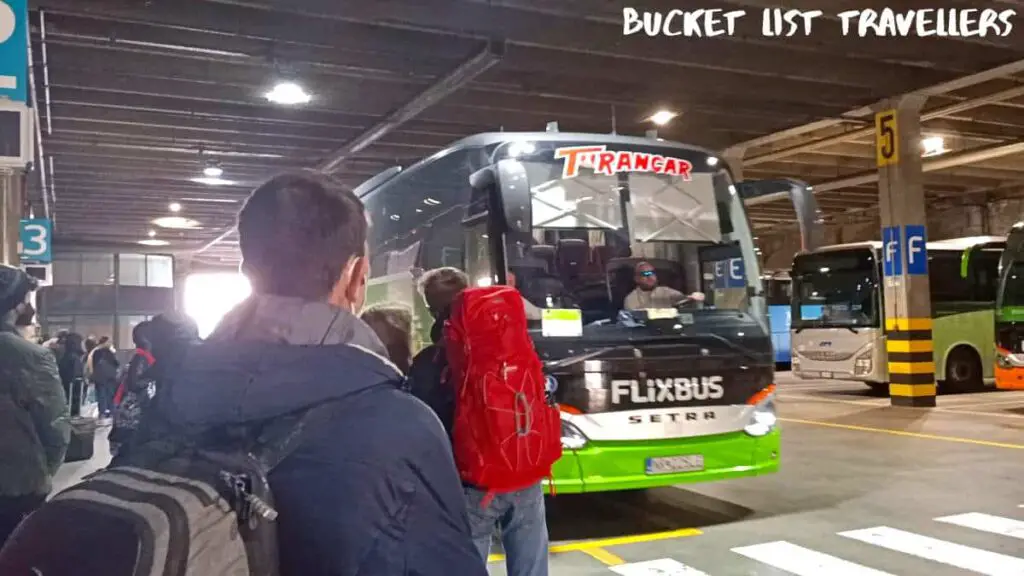
Trieste destination guide: Arriving by air
The nearest major airport to Trieste is Trieste Airport (Airport code TRS). This international airport is also known as Trieste – Friuli Venezia Giulia Airport. It is located 30km (19miles) from the city.
Other nearby airports include:
- Rijeka Airport Croatia (Airport code RJK). This airport is 79km (49miles) away
- Ljubljana Jože Pučnik Airport Slovenia (Airport code LJU). This airport is 83km (52miles) away.
- Pula Airport Croatia (Airport code PUY). This airport is 85km (53miles) away.
The national airline of Italy is ITA Airways (Italia Trasporto Aereo).
Trieste destination guide: Arriving by boat
The city of Trieste is on the Adriatic Sea (which is an arm of the Mediterranean Sea). The Port of Trieste is destination for cruise lines as well as ferries.
From Trieste, there are ferries to 5 destinations in Croatia. Availability may vary depending on the season. The ferry company that operates out of Trieste is Trieste Lines.
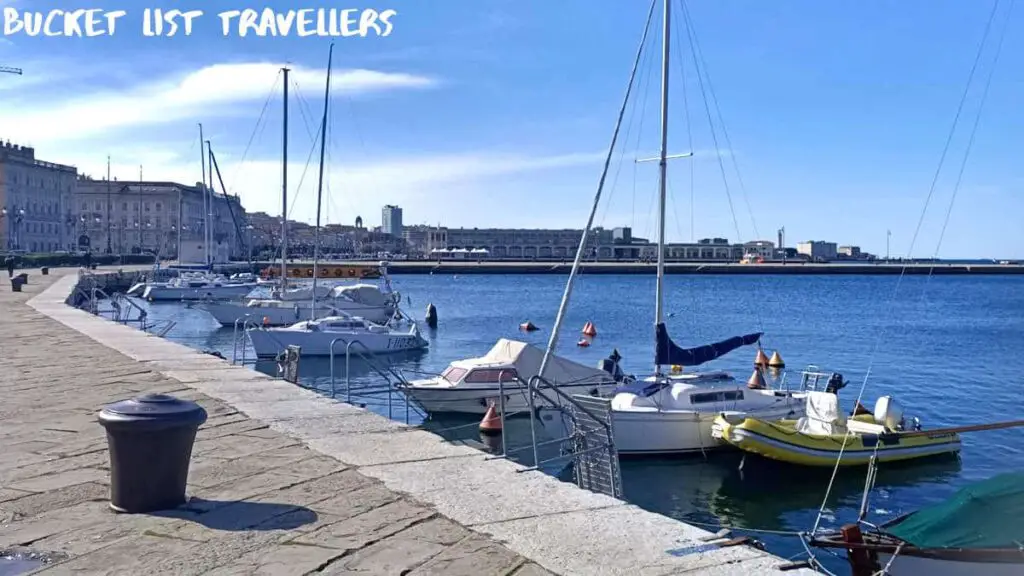
Trieste destination guide: How to get around Trieste Italy
Walking in Trieste Italy
By far the easiest and cheapest way to get around Trieste is to walk. Furthermore, most of the main attractions in the city area are within easy walking distance.
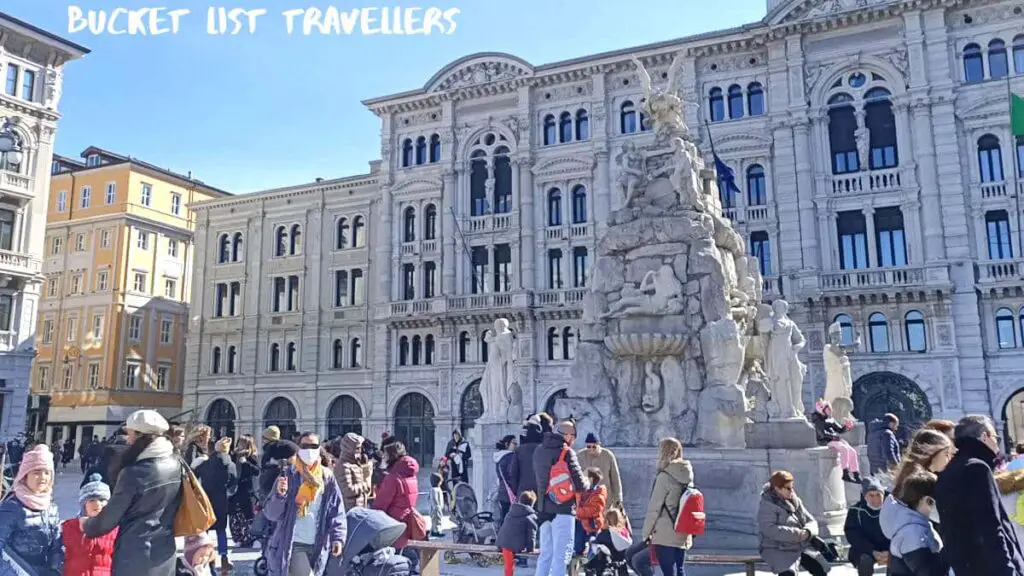
Local buses in Trieste Italy
Local buses service Trieste. These services are operated by the city’s public transport service, Trieste Transporti. For more information, see this website: https://www.triestetrasporti.it/
Trolleybuses in Trieste Italy
The city of Trieste has not had a trolleybus service since 1975.
Trams in Trieste Italy
The Trieste–Opicina tramway is a hybrid tramway and funicular railway. It was a 1 line system with 13 stations. The service was suspended after an accident in August 2016. The tramway was operated by the city’s public transport service, Trieste Transporti. For more information, see this website: https://www.triestetrasporti.it/
Local trains in Trieste Italy
Trieste does not have a local train service.
Metro trains (subway or underground) in Trieste Italy
Trieste does not have an underground rail system.
Vehicle hire in Trieste Italy
A wide variety of vehicles can be rented in Italy. This includes:
- Bicycles – There are self-service bike share services available in the city from companies such as BiTS. Alternatively you can hire a bike from a bike hire shop such as Bike Rental Trieste Start Sport.
- Electric scooters
- Cars
- SUVs
- Campervans
- Boats
The Italian drive on the right side of the road.
Taxis in Italy
Taxis are common in Italy. Fares are regulated and are usually metered. The exception to this will be standard journeys such as airport trips. In this case the fare will be a fixed price. Taxi rates are usually displayed inside the vehicle as well as at taxi ranks. In general your fare will include the following costs:
- The pickup fee or minimum fee – this is charged as soon as you get into the vehicle
- There may also be an additional fee for extra people or heavy luggage
- Price per kilometre – this price can vary depending on the time of day
- Price per hour – this is a price that gets charged when the taxi is stuck in heavy traffic. The price also varies depending on the time of day
It is not necessary to tip taxi drivers in Italy. At most, Italians may round up the fare to the nearest dollar as a tip.
To ensure you are charged the correct amount, be sure to only use official taxis that have a taxi sign on the roof. Also check that the taxi driver resets the metre before taking off and that the metre is working. In particular, if your trip is inside city limits “Tarrifa 1” on the metre should be lit up. Note that this is the lower and correct rate. Conversely, Tarrifa 2 and 3 should only be used for trips outside the city walls or to the airport.
Ride-share services in Trieste Italy
Trieste does not have any ride-share services.
Waterbuses in Trieste Italy
There are two waterbus maritime services in Trieste. These are operated by the city’s public transport service, Trieste Transporti. The maritime lines are as follows:
- Trieste-Muggia (operates daily, year round)
- Trieste-Barcola-Grignano-Sistiana (seasonal summer service)
For more information, see this website: https://www.triestetrasporti.it/
Trieste Italy destination guide: Is Trieste worth visiting?
Trieste flies under the radar in terms of Italian destinations, but it is a beautiful city that has a lot to offer. Conveniently close to the border with Slovenia, Trieste offers waterfront views, vibrant town squares, great food and coffee and a relaxed atmosphere. It is a great value destination that is heavily influenced by its Austro-Hungarian past in its architecture and its cuisine. If you love visiting places that are off the beaten path, we highly recommend visiting Trieste.
Trieste destination guide: How long to spend in Trieste Italy
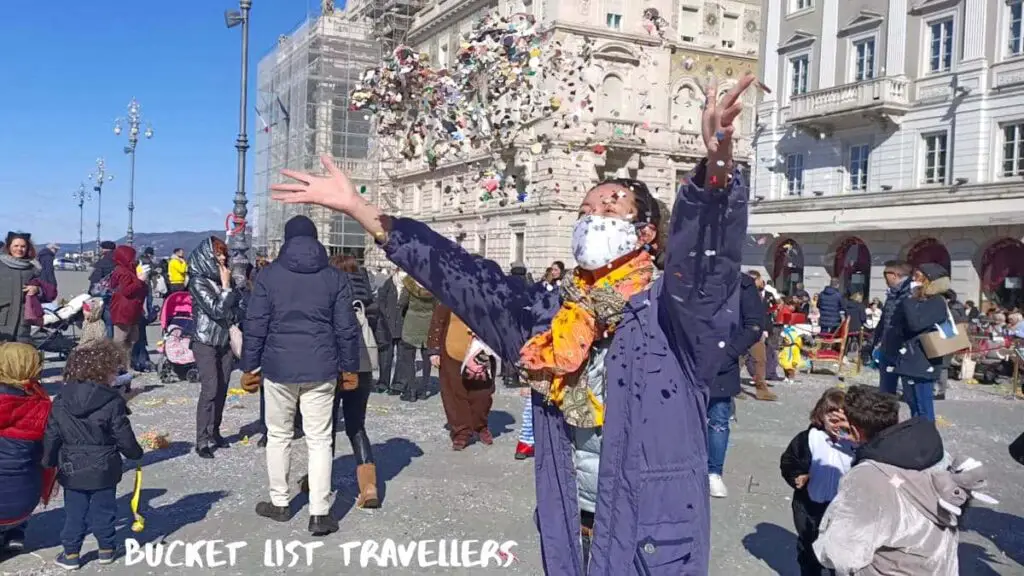
Trieste is a great place to come for a weekend. The city is an amazing place and there’s good reason why it is world renowned. We spent 2 days in Trieste and enjoyed taking time to enjoy the various activities available in this vibrant city.
Trieste destination guide: What to do in Trieste Italy
Trieste is a beautiful Italian city with many activities on offer. It has a range of great free activities as well as paid activities.
Trieste destination guide: Free things to do in Trieste Italy
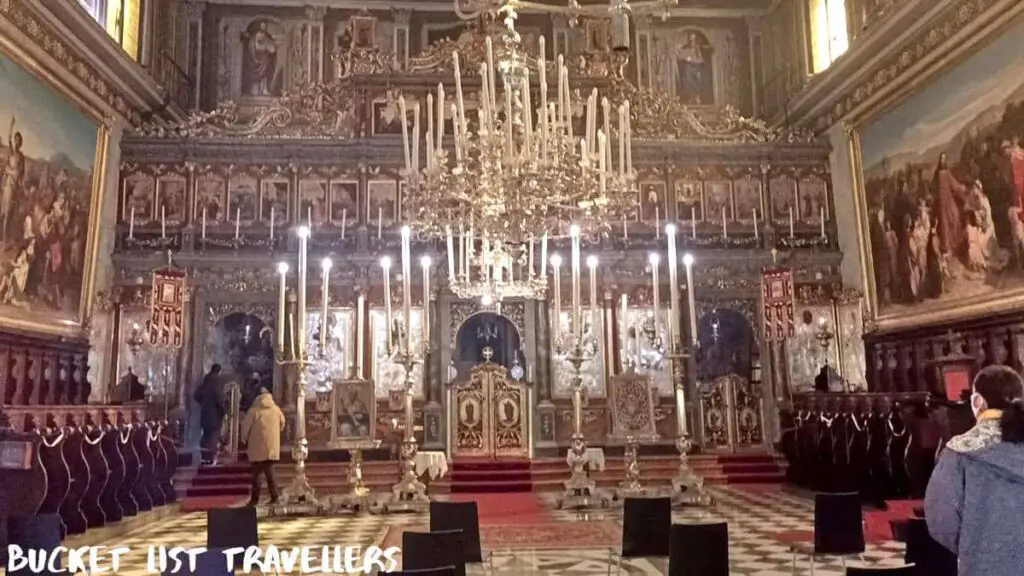
There are enough free activities in Trieste Italy to keep you entertained for a weekend or even a leisurely week:
- Piazza Unità d’Italia
- Civico Museo della Risiera di San Sabba (2 euro for audio guide)
- Cattedrale di San Giusto Martire
- Carso Triestino
- Barcola Beach
- Faro della Vittoria
- Molo Audace
- Riserva Naturale della Val Rosandra
- Chiesa Serbo Ortodossa di San Spiridione
- Canal Grande di Trieste
- Centrale Idrodinamica del Porto Vecchio di Trieste
- Parco del Castello di Miramare
- Citta Vecchia
- Chiesa Greco Ortodossa di San Nicolò
- Riserva Naturale Marina di Miramare
- Viale XX Settembre
- Strada Vicentina
- Trieste InfoPoint
- Monumento Foiba di Basovizza
For more details, see our Trieste travel guide on the 19 Best Free Things To Do in Trieste Italy.
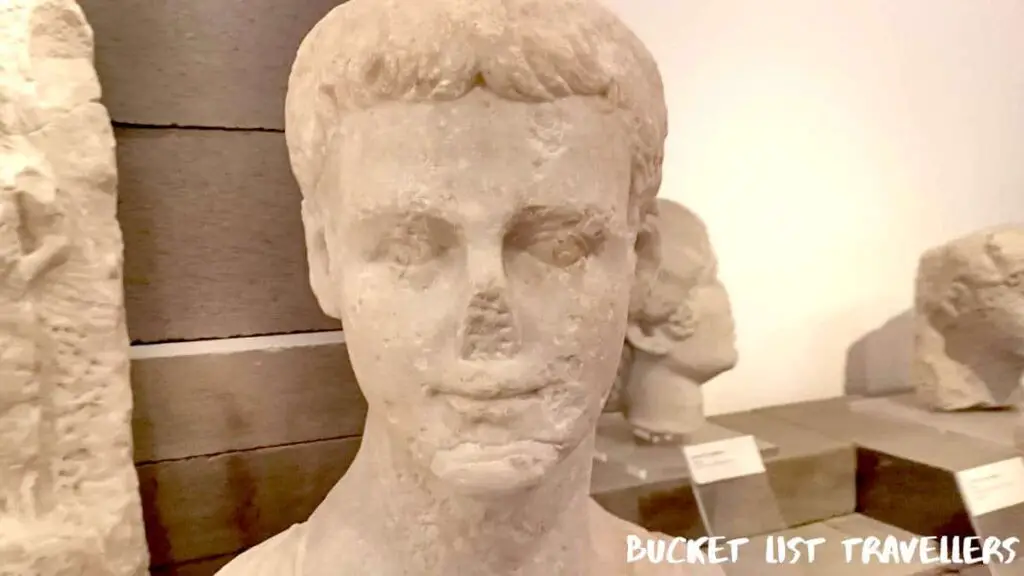
Trieste destination guide: Paid activities in Trieste Italy
A number of attractions in Trieste Italy charge an entry fee:
- Castello di Miramare – entry fee is 12 euro for adults (as at 2024)
- Museo Revoltella – entry fee is 8 euro for adults (as at 2024)
- 3Kleine Berlin – entry fee is 5 euro for adults (as at 2024)
- Castello di San Giusto – entry fee is 6 euro for adults (as at 2024)
- Museo Civico di Storia Naturale – entry fee is 4 euro for adults (as at 2024)
- Grotta Torri di Slivia – entry fee is 16.50 euro for adults (as at 2024)
FVG Card
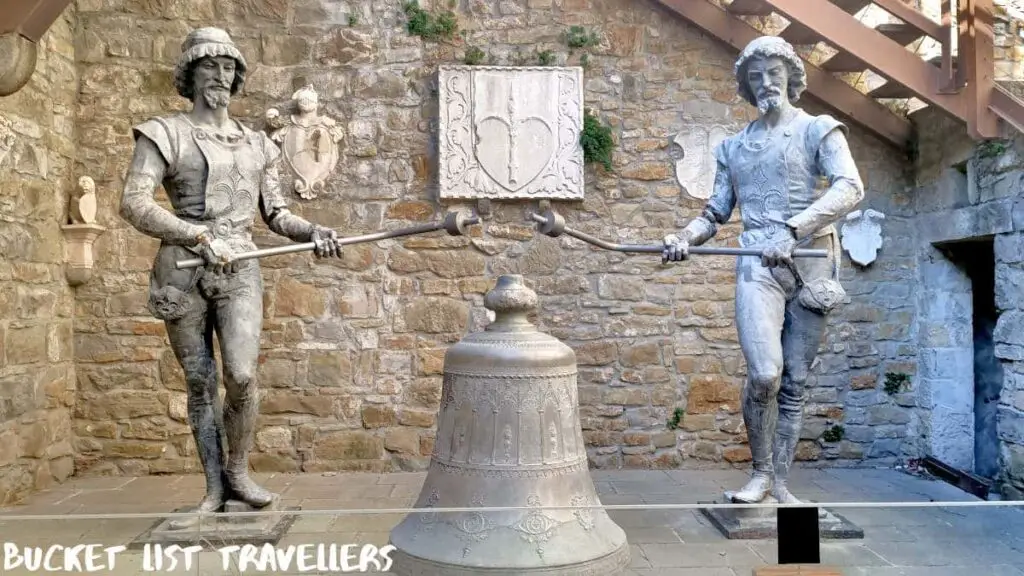
The FVG Card is a city card that allows you to explore many of the attractions in Trieste for free. Additionally you can get discounts and special offers for a selection of shops and activities in the area. There are 48 hour and 1 week passes are available.
The price of FVG Cards is as follows:
- 48 hour – 30 euro for adults (as at 2024)
- 1 week – 45 euro for adults (as at 2024)
For more information on the FVG Card, visit this website.
Weather in Trieste Italy
Trieste enjoys a warm temperate climate. Its climate is heavily influenced by the nearby Mediterranean area. During the winter it is cold with average temperature range between 3°C and 8°C in the coldest month of January. Summers last from June to September and are hot and sunny, with the average temperature range between 21°C and 28°C in the hottest month of July. It is a windy city and experiences frequent and sometimes powerful winds. Snow is rare but not unheard of in Trieste. The month with the most rainfall is June with 9.1 days of rain on average and the driest month is January with an average of 6.4 rainy days.
Best time to visit Trieste Italy
The best time to visit Trieste is between late May and mid September, when the weather is most pleasant for outdoor activities. The peak tourist season is between June and August, so expect higher prices at that time.
Internet and mobile phones in Italy
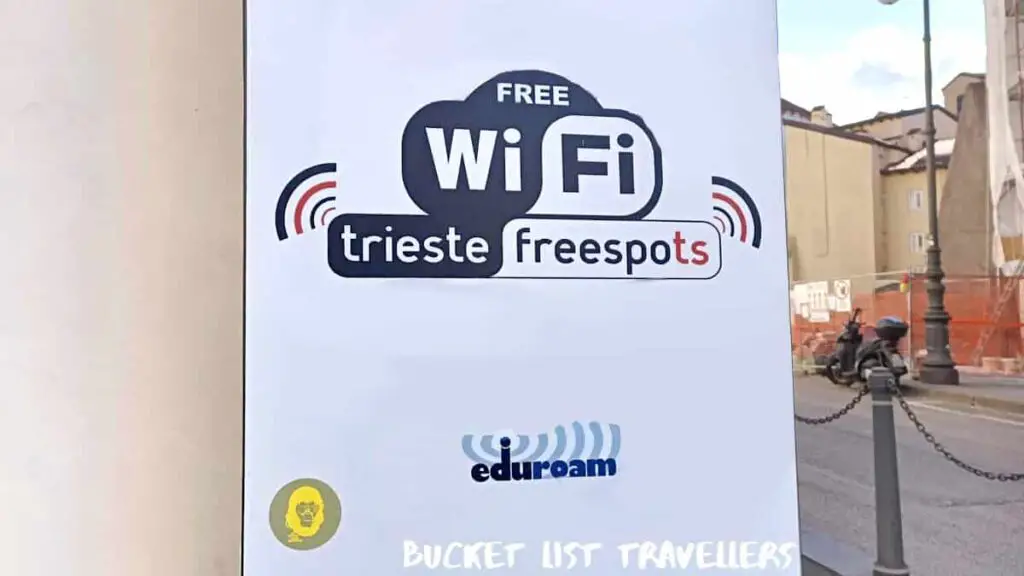
Since June 15th, 2017, Roam Like at Home (RLAT) rules came into force for European Union countries. As such, people with European Union mobile numbers are no longer charged temporary mobile roaming fees if they travel within the European Union. This means that if you have a European Union mobile number, you can use that number anywhere within the European Union and you will be charged for calls, texts and data in the same rates as if you were in your home country. There are limits to this in order to prevent abuse of these rules.
The main internet and phone companies in Italy include TIM, Vodafone, Wind, 3, Iliad.
5G has been in Italy since June 2019. However 2G is expected to continue in Italy until 2025.
The average internet speeds in Italy are reasonably fast. Italy is ranked 55th fastest in the world for mobile internet speeds and 73rd fastest for fixed broadband. For Fixed Broadband the average download speed is 81mbps and upload is 20mbps (as at April 2024).
The best place to buy cell phone SIM cards in Italy are in phone stores. They can be found in shopping malls and city centres. We recommend not buying a SIM card at the airport as prices are generally higher at the airport. You will need to present photo ID in order to purchase a SIM card.
How much to budget for Trieste Italy?
Is Trieste expensive?
As far as Italian cities go, Trieste is surprisingly inexpensive. Prices are more in line with its neighbour Slovenia than with the rest of Italy. The city has a range of accommodation options, dining choices and activities that suit different budgets. Moreover, the city is easy to explore on foot, which helps save money on transportation.
Trieste destination guide: Daily spend for a couple travelling in Trieste Italy
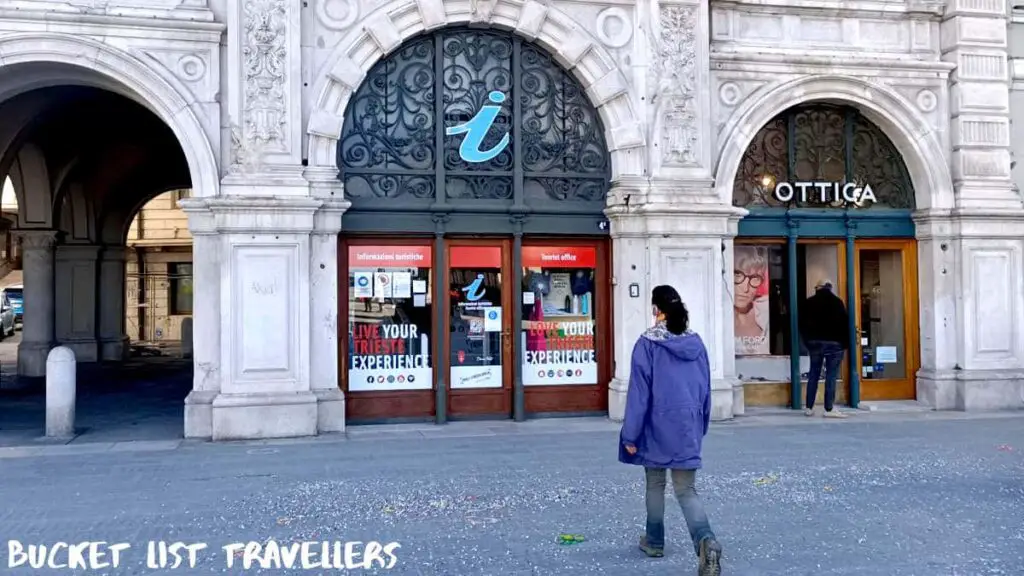
As a rough guide, we recommend the following budgets for a couple:
- Low-budget daily spend – 100 euro per day for a couple will get you budget accommodation, self catering and bakery meals, walking or catching local transport to get around the city and free or cheap activities.
- Mid-range daily spend – 300 euro per day for a couple will get you mid-range accommodation, walking or catching local transport to get around the city, dining at reasonably priced cafes and restaurants and some paid activities.
- Luxury spend – 1000 euro per day for a couple will get you a premium experience, staying at high end hotels, travelling by private transport, doing a range paid activities and eating at high end restaurants.
Trieste destination guide: Accommodation in Trieste Italy

There is a good range of accommodation to suit most budgets in Trieste Italy. Airbnb operates in Italy and Trieste has a number of apartments for rent.
Where to stay in Trieste Italy?
We recommend the following accommodation in Trieste Italy:
- Best 3 star hotel in Trieste Italy – 9 Stanze Boutique Rooms provide clean, stylish and spacious rooms in a central location in Trieste. The staff are friendly and helpful and provide great restaurant recommendations. This hotel also has a great view of Piazza della Borsa and the beds are very comfortable.
- Best 4 star hotel in Trieste Italy – Seven Historical Suites is a gorgeous property set in a historical building. The rooms are modern and elegantly decorated. The staff provide an outstanding level of service and the amenities are high quality with many thoughtful touches. Furthermore the hotel is in a convenient location right in the heart of Trieste.
- Best 5 star hotel in Trieste Italy – Grand Hotel Duchi d’Aosta is a luxurious and historic hotel in a prime position in Trieste. The staff are very professional and there is a two Michelin star restaurant on-site.
How much is accommodation in Trieste Italy?
For short-term accommodation, a general price per night is as follows:
- Budget accommodation – 20-25 euro for a dorm
- Mid-range accommodation – 45-140 euro for a private room
- Luxury accommodation – 150-300 euro a night for a luxury hotel
- Rental property – 150-400 euro a night for a fully furnished 3-4 bedroom home
City tax on accommodation in Trieste Italy.
Most cities in Italy charge a city tax, which must be paid to your host and is an additional charge on top of your nightly rate. Trieste introduced its city tax on 1 June 2018. It is a per person per night charge for all guests over the age of 18. This charge is capped at a maximum of 5 consecutive night stays. The charge varies depending on the star rating of the accommodation and the time of year. The prices as at 2022 are as follows:
- 2 stars = 1.50 euro
- 3 stars = 2 euro
- 4 stars = 2.20 euro
- 5 stars = 2.50 euro
Trieste destination guide: Food in Trieste Italy
Being on the water, seafood is very popular in Trieste.
How much does food cost in Trieste Italy?
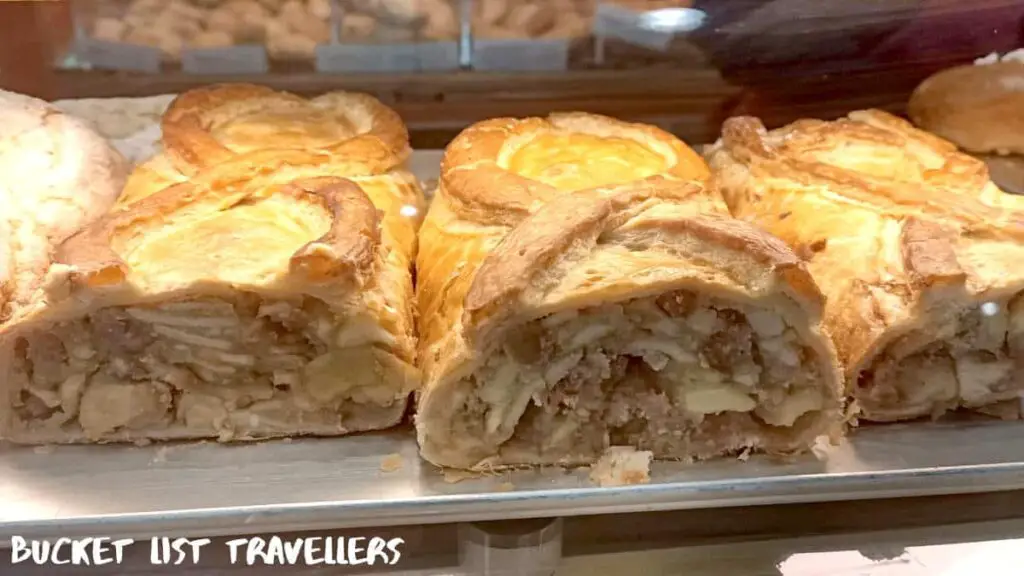
Our price guide for your food budget in Trieste Italy is as follows (prices as at 2022):
- Restaurant meal – 12-20 euro for a main dish
- Bakery food – 3.50 euro for arancini, 2-3 euro for a slice of pizza
- Glass of wine – 4-7 euro
- Coffee – 1-4 euro
Coperto charge for restaurants in Italy
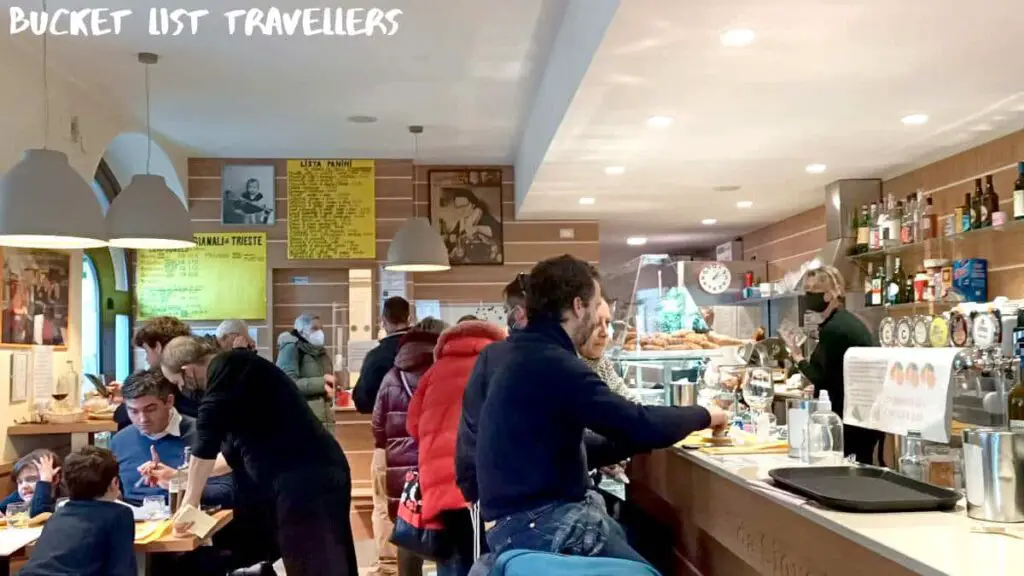
Most restaurants will charge a coperto charge if you are dining in. This cover charge is usually around 1-3 euro, but may be higher in touristy areas. It is a fixed per person charge and is meant to cover things like table linen, tableware and may also cover bread. It’s a non-negotiable charge and must be listed on the menu. If you can’t find it listed on the menu, ask your waiter if there is a coperto charge.
Servizio charge for restaurants in Italy
Some restaurants charge a servizio charge. This service charge is generally a percentage of your bill and must be listed on the menu. It is usually charged in restaurants in touristy areas as well as for groups of 8 or more.
Regional dishes in Trieste Italy
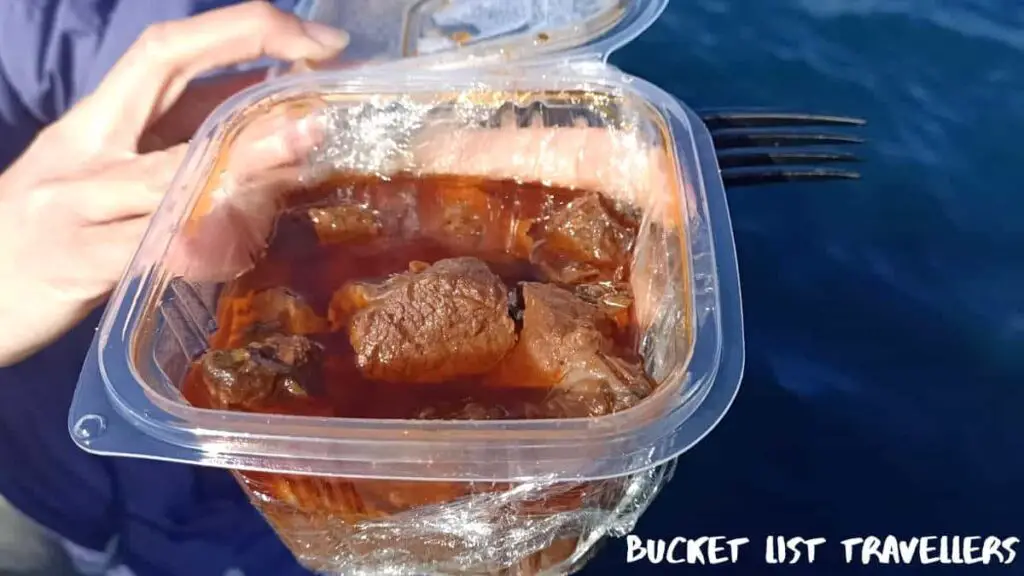
- Jota
- Gulasch alla Triestina
- La Calandraca
- Chifeletti
- Strucolo de pomi
- Frittole Triestine
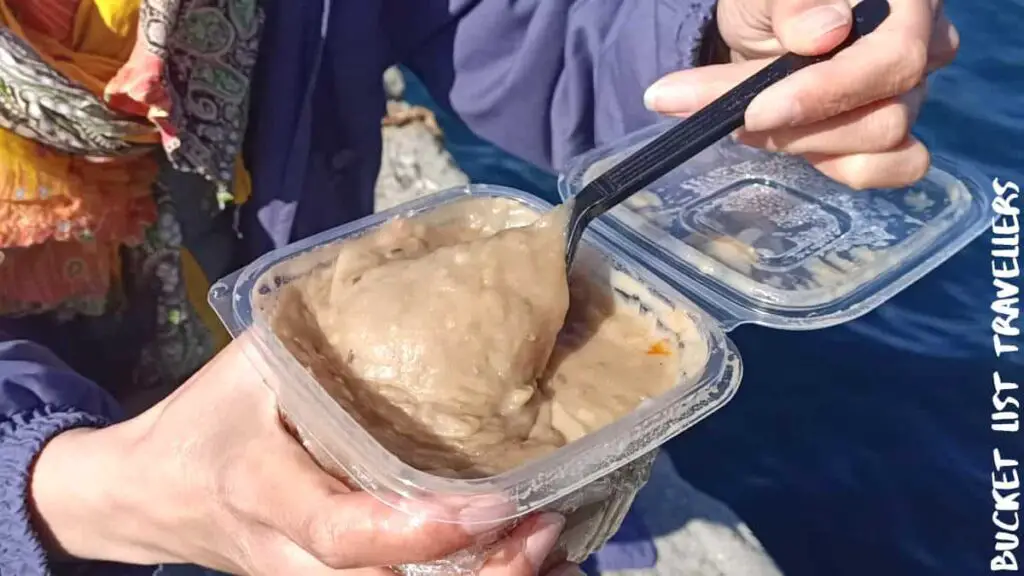
Cheap Eats in Trieste Italy
- Panetterias or focaccerias (Italian bakeries) are great places to get cheap as well as delicious food. Slices of pizza are around 1-4 euro. Arancini are around 3.50 euro each. Other common food that can be found in Italian bakeries include panini, canoli as well as fritole.
- Pizzerias are unsurprisingly abundant in Italy and are also perfect for a cheap quick meal. Prices will vary depending on size and ingredients, but expect to pay around 5-10 euro for a pizza.
- Gelato in Italy will satisfy your sweet tooth but without breaking the budget. Expect to pay around 3 euro for a single scoop cone.

Fine dining in Trieste Italy
Trieste is home to a number of Michelin Guide restaurants.
Michelin 2 star restaurants in Trieste Italy (2024):
- Harry’s Piccolo
Michelin Plate restaurants in Trieste Italy (2024):
- Menarosti
- Al Petes
- Al Bagatto
Trieste Italy culture
Trieste public holidays
- New Year’s Day – 1 January
- Epiphany (Epifania or Befana) – 6 January
- Easter Sunday (Pasqua) – typically in March or April
- Easter Monday (Pasquetta) – the Monday after Easter Sunday, typically in March or April
- Liberation Day (Festa della Liberazione) – 25 April
- International Workers’ Day (Festa del Lavoro) – 1 May
- Republic Day (Festa della Repubblica) – 2 June
- Assumption Day (Ferragosto) – 15 August
- All Saints’ Day (Ognissanti or Tutti i Santi) – 1 November
- Day of the Immaculate Conception (Immacolata) – 8 December
- Christmas Day (Natale) – 25 December
- Saint Stephen’s Day (Santo Stefano) – 26 December
National symbols of Italy
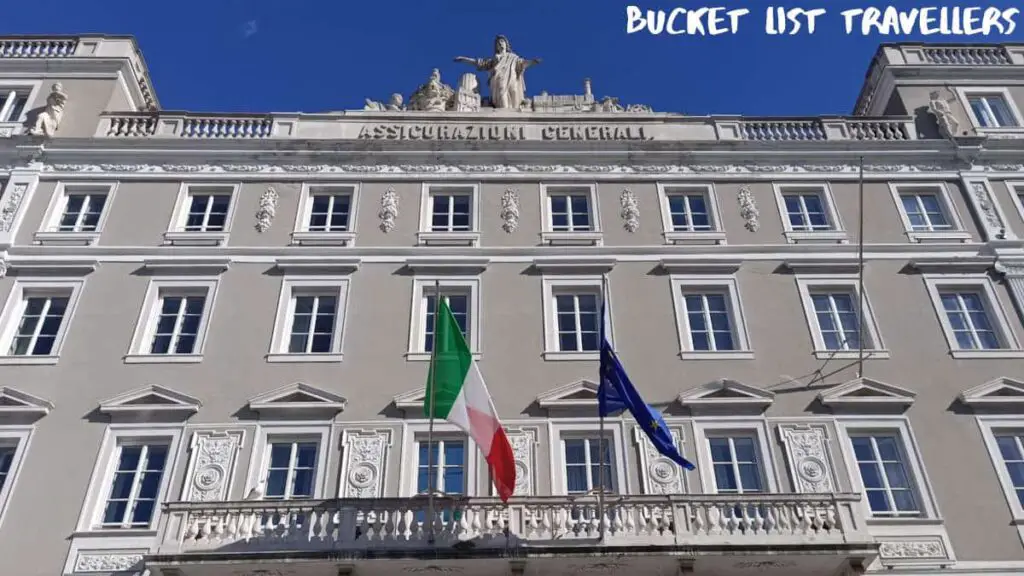
- Italy flag – a tricolour flag featuring three vertical bands coloured green, white and red from left to right.
- Italy coat of arms – this features a Roman wreath, a white 5-pointed star with a red border on a 5-spoked cogwheel, an olive branch, an oak branch as well as a red ribbon with the words “REPVBBLICA ITALIANA”.
- National flower – lily
- National bird – Italian sparrow
- Italian national animal – Italian wolf
Italy pastimes
- National dish – Ragu alla Bolognese
- Popular drinks – Aperitivo, Negroni, Campari, Aperol Spritz, Prosecco, Limoncello, Italian wine
- National sport – football
- Religion – 79.2% Catholic, 3.5% Eastern orthodox, 7.5% agnostic, 4.1% atheist (as at 2021)
Famous people from Trieste Italy
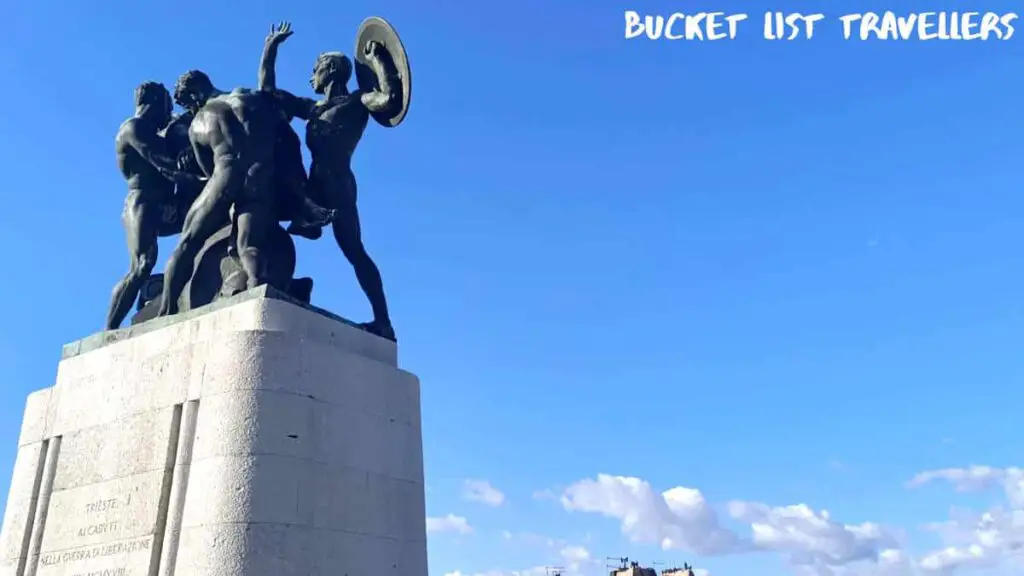
- Famous people born in Trieste Italy – musician Luca Turilli, writer Italo Svevo, writer Scipio Slataper, novelist Susanna Tamaro, writer Vladimir Bartol, writer Marica Nadlišek Bartol, illustrator Milko Bambič, painter Alexander Kircher, actress Loredana Nusciak, Baritone Piero Cappuccilli, journalist Bianca Maria Piccinino, actor George Dolenz, actor Paul Henreid
- Sports stars from Trieste Italy – footballer Cesare Maldini, footballer Sara Gama, Motorsports Racing Driver Andrea de Adamich, chess master Enrico Paoli, basketball player Cesare Rubini, Olympic archer Ilario Di Buò
Is Trieste Italy Safe?
Italy travel guide: Safety in Italy
We travelled through Italy for two weeks and generally found the country to be very safe. However as with any country, there are good areas and bad areas. Watch out for pickpockets and bag snatchers particularly in Rome, Venice, Florence, Milan and Naples. Beware that bag snatchers can even use cars as well as scooters for drive by bag snatching. Milan also has an issue with counterfeiters selling fake goods. Additionally, Naples and Florence have a reputation for scams. Theft is the most common crime in Italy, so never leave your belongings unattended. Be extra vigilant in crowds as well as on public transport. Also, make sure no-one is watching whenever you are entering pin codes and never lose sight of your credit card when making a purchase.

General safety considerations in Italy
Other general safety considerations for travel in Italy:
- Drinking water – Tap water in Italy is safe to drink almost everywhere. However some very rural areas may not have water that’s safe to drink. In particular, if you see a sign that says “acqua non potabile” the water is not safe to drink.
- Nightlife – never leave your drink unattended because there have been reports of spiked drinks in bars and nightclubs.
- Mosquitoes – the tiger mosquito has been in Italy since 1991. It spreads diseases such as Zika, dengue and chikunguya.
- Altitude sickness – Italy has areas of high altitude and consequently risk of altitude sickness. Therefore allow sufficient time to acclimatise if visiting high altitude areas. Additionally, if you experience signs of altitude sickness (headache, nausea or vomiting, dizziness, tiredness, loss of appetite or shortness of breath) get help immediately.
- Road safety – Italy has one of the highest road death tolls in Europe, due to driver behaviour as well as road conditions. Robberies from cars are not uncommon, particularly around gas stations. Always lock your vehicle, roll up windows and never leave valuables unattended in your vehicle. Ignore anyone who tries to flag you down – even if they are telling you you have a flat tyre. Carjackings are a risk in some parts of the country such as Sicily.
- Taxis – only use official taxis designated by a taxi sign on the roof. Moreover, don’t take a ride from a driver that approaches you.
- Water safety – take care when swimming as currents and waves may be stronger than you expect.
- Sun safety – Exposure to the sun can have adverse short-term as well as long-term effects on the skin, eyes and immune system. Wear sun protection such as sunscreen, a hat and sunglasses.
As with any destination, take all of your normal safety precautions.
Italy Blogs
You can find our Italy travel blogs below.
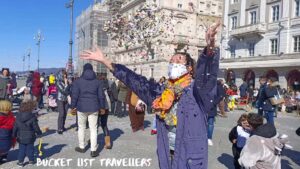
19 Best FREE Things To Do in Trieste Italy (with map)
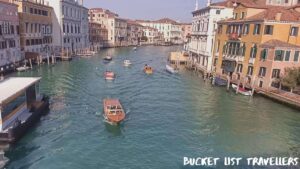
14 Best FREE Things To Do in Venice Italy (with map)
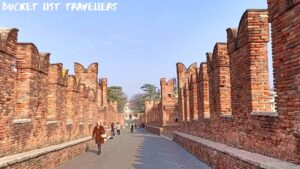
15 Best FREE Things To Do in Verona Italy (with map)
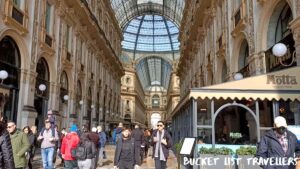
17 Best FREE Things To Do in Milan Italy (with map)
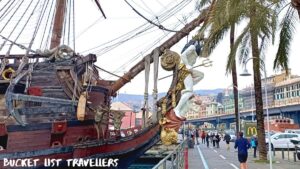
15 Best FREE Things To Do in Genoa Italy (with map)
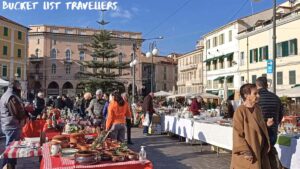
12 Best FREE Things To Do in Sanremo Italy (with map)
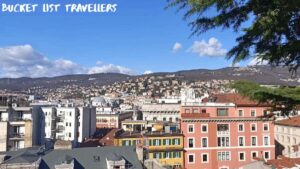
Trieste Destination Guide (2024): What You Need to Know
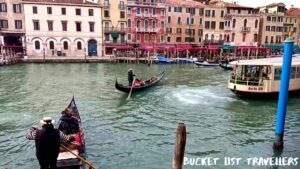
Venice Destination Guide (2024): What You Need to Know
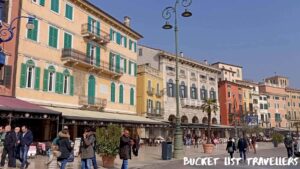
Verona Destination Guide (2024): What You Need to Know

Milan Destination Guide (2024): What You Need to Know
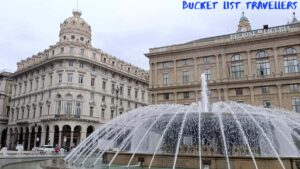
Genoa Destination Guide (2024): What You Need to Know
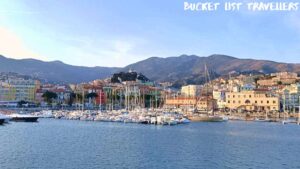
Sanremo Destination Guide (2024): What You Need to Know
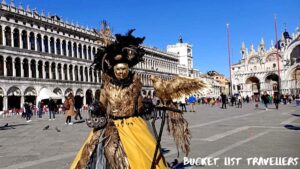
14 Most Surprising Things About Visiting Italy!
Affiliate Links
This website contains affiliate links, which means we may earn a commission on any purchases at no additional cost to you. Your support helps us continue our travels and make more travel blogs and travel videos, thank you!
